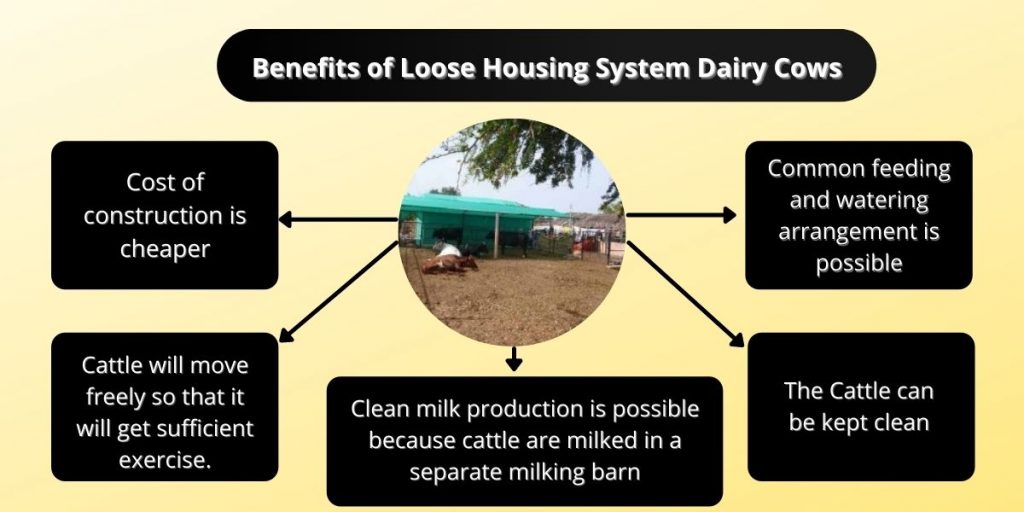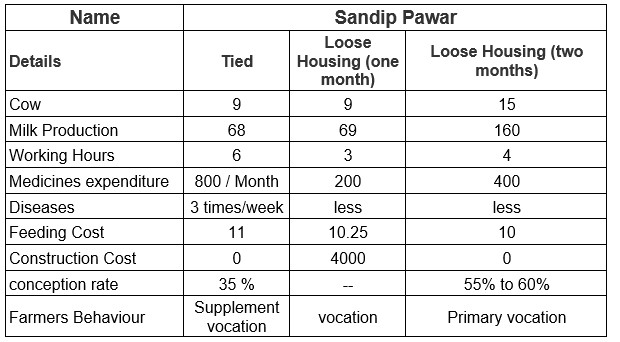
Sandip Pawar – Successful Progressive Farmer
Successful Progressive Farmer
Sandip Pawar is a successful progressive farmer now aged around 30 years after completion of graduation from a local college decided to join a job in a local finance company. Very soon he lost interest in the monotonous work but stuck to it as it provided him a regular monthly salary. His parents were into farming and his younger brother was still in school, on request of his parents, he decided to help them in farming. He started enjoying farming but soon realized that due to climate uncertainties and fluctuating prices of farm-produce he could not depend on crop alone and needed to supplement income through dairy farming. But his parents owned only one cow and one heifer which were very low milk producers. From the salary savings, he decided to purchase a better yielding cow from the market. After getting the new cow to his farm he found that the milk production was not as per promise.
The farmers in the village told him that nobody will sell a good cow. He, therefore, took a decision to build up his own herd by using good quality progeny tested semen and rearing calf and heifers. In a few years, his herd size rose to 12 and then 15. Once herd size increased, he stated facing labour shortage. Since Phaltan is an industrial area, youths were more inclined to salaried jobs and no one was interested in handling dung, urine and cows. He had seen a few automated farms in the area but the idea was not feasible as such facilities required heavy capital investment and maintenance. Being educated and aware he started looking for technologies and practices that could help him expand his dairy business and enhance profits.
Cost-effective Loose Housing
Through Govind Dairy Extension Team he came across the new concept of ‘Loose Housing System Dairy Cows’ wherein the cost of the housing could be kept low by using locally available material resources. He jumped to adapt to this novel technology. He had enough iron pipes, bamboo and other wood logs for constructing loose housing for 8-9 cows. He constructed a simple fence by fixing cast iron poles every 8 feet distance and height above ground 5 feet. He fixed bamboo and other wood logs horizontally on these poles to complete barricade from all four sides. He also leveled the earth floor by spreading sand and loom soil and compacting the same manually. He did all this work using family labour. Within a week the new loose house was ready for cows to remain untied and loose open to sun all the time. He also provided half-cut cement pipes for water and feed. He could not believe that by spending only Rs. 3300 he could construct a cow house facility that ensured the comfort and welfare of cows.
Benefits of Loose Housing System Dairy Cows
He was thrilled to observe the benefits of the new housing system he adopted right from the next day. He found that the labour requirements went down drastically as there was no need to wash the floor or the animals, which his family was forced to do twice every day. This saved at least four hours of daily work and water which is scarce in the drought-prone areas. He was satisfied to see that the cleanliness index of the cows improved substantially. He also found that the cows that were difficult to handle became very docile and easy-to-milk. He feared that loose cows in open would fight and cause injuries, but to his surprise, the cows became friends and moved as a single group.

Within a month he could see other benefits, increased milk production by 15-20%, reduced sickness, reduction in cases of mastitis. Since the dung was getting sun-dried it was cleared from the house every 2-3 months. Dried dung also reduced the menace of flies and mosquitos. Within a year he realized that since bamboo logs were bending and not looking good, he decided to reconstruct the barricade using iron pipes only. He also decided to fix the wire net to avoid the entry of dogs and wildlife. As he kept on adding farm-bred heifers he also expanded the housing capacity.

Adoption of Silage Technology
Now that he was having enough spare time, he started focusing on other aspects of dairy operations. He knew the importance of feeding fodder at the right time in the morning and evening. But, due to the irregular availability of farm labour the feeding schedule, many times got delayed. This affected milk yield and quality especially fat content. On the advice from the Govind Dairy Extension team, he decided to prepare silage. He learned the technique of making silage in plastic bags and pits. This led to several benefits for him. He could harvest the entire 3 acres fodder crop in a single day when the crop age was optimum for biomass yield. The land became available for another crop whereas earlier with daily cut-n-carry system his land was locked for at least two months. Since the crop was harvested at the optimum age for moisture, dry matter content and digestibility, the nutrition value of the fodder improved. This resulted in uniform milk production and eliminated daily variations in fat and protein in milk. He created the facility to prepare 20 tons of silage every three months. This solved his problem of fodder and led to a reduction in the cost of milk production.
Biological Tick Control
Sandeep Pawar was always looking for cutting losses to increase his profit margins. He was aware that that tick-born-diseases was costing him a lot of money on the treatment of sick animals as well as sprays for tick-control. Even with all these, he was not able to control ticks on his farm. On the advice of the Govind Dairy Extension Team, he agreed to try a biological tick control method. He introduced desi poultry birds in the cow area with rational that birds will pick on ticks from the floor as well as animal bodies. He found that these birds also spread dung for picking up undigested grains. This resulted in early drying off of dung on the floor. The tick on the animal body also reduced significantly. Within a month he could control tick tick-borne diseases on his farm. Money earned from the sale of eggs was a bonus for him as desi eggs fetched more price in the village.
You may also like to read: Tick Infestation in Dairy Cattle and its Control
Continues to be Progressive
He became an iconic farmer in the area. Many farmers even from other states started visiting his farm to see how he implemented various technologies. He also started getting an invitation from local radio and TV channels for interviews and to explain how these technologies helped him in cutting costs and earning more profit. Nowadays he is also hosting delegates and farmers from abroad, university academicians, researchers, and politicians, visit his farm to understand how appropriate technologies can transform the life of dairy farmers.
He continues to look for new technologies and adopt them. If interested, you can contact him on 9922818520 and do visit his farm, Village- Rajale, Taluka Phaltan, District Satara, Maharashtra State.
Read more about: Advantages & Limitations of Artificial Insemination (AI) in Dairy Cattle
